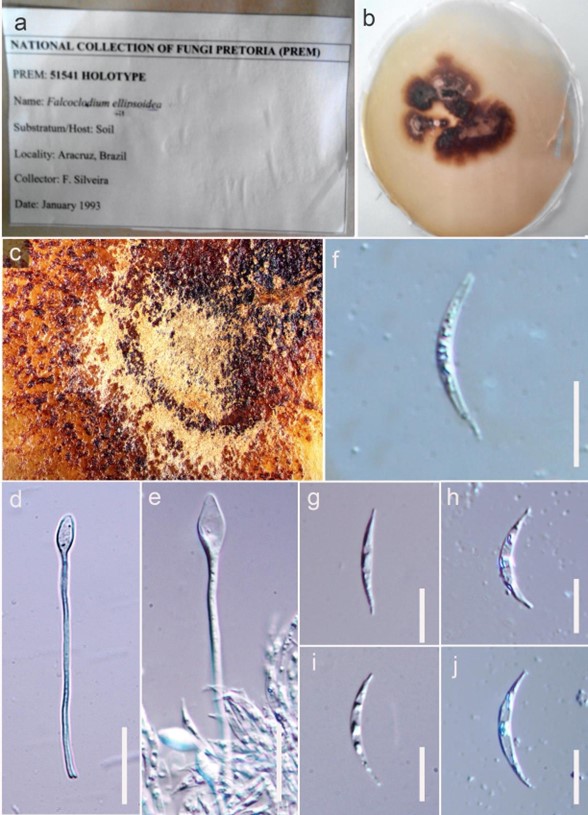Falcocladium S.F. Silveira, Alfenas, Crous & M.J. Wingf., Mycotaxon 50: 447 (1994)
MycoBank number: MB 25800; Index Fungorum number: IF 25800; Facesoffungi number: FoF 02108; 5 species with sequence data.
Type species – Falcocladium multivesiculatum S.F. Silveira, Alfenas, Crous & M.J. Wingf.
Notes – Falcocladium includes five species, all of which occur on leaves, namely F. africanum, F. multivesiculatum, F. sphaeropedunculatum, F. turbinatum, and F. thailandicum. Falcocladium species can be distinguished based on their setal vesicle shape (ellipsoidal, sphaerpedunculate or turbinate) and conidial dimensions. Phylogenetically they are distinct from other genera in the Hypocreomycetidae and form a monophyletic clade (Jones et al. 2014). In this entry we illustrate Falcocladium multivesiculatum. The species F. multivesiculatum has a wide host range and mainly occurs on leaves, including Eucalyptus grandis and E. camaldulensis. The fungus is distributed mainly in tropical forests (Somrithipol et al. 2007, Maharachchikumbura et al. 2016b). The taxon fits well within the species concept of Falcocladium with white sporodochia, bearing thick-walled aseptate, stipe extensions and hyaline, 0–1-septate, falcate conidia, with short apical and basal appendages (Crous et al. 1994a, Somrithipol et al. 2007).

Figure 103 – Falcocladium multivesiculatum (Material examined – BRAZIL, Aracruz, Espirito Santo, from Eucalyptus grandis leaf litter, January 1993 Silvaldo F. Silveira, PREM 51541, holotype). a, c Herbarium material. b Dried culture on MEA. d, e Ellpisoidal vesicles on setae. f-j Conidia. Scale bars: d,e = 20 µm, f-j = 10 µm.
Species
Falcocladium multivesiculatum
